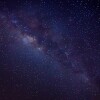The 5 Best Night Sky Viewing Spots in Orange County
OK, let's face it: Orange County isn't exactly a stargazers' destination of choice. We haven't done the math, but it's likely the second-brightest county in the state (after San Francisco), with its renowned sprawling development and its position nestled between brightly lit Los Angeles and San Diego. But even in Orange County there are places where you can get out and see more than a few stars, especially on new moon nights, and especially if you get into its less-developed southeast end.
Irvine Regional Park
But let's try the north end of the county first. Irvine Regional Park sits just where the 24/7 glare of the southern L.A. Basin starts to slacken a bit, just at the foothills of the Santa Ana Mountains. You will generally be able to make out the major constellations here along with perhaps a few other objects. The stargazing window here is brief: The park closes at 9:00 pm in summer and 6:00 pm in winter, but their "summer" starts on April Fool's Day and ends on Halloween. There's also a (somewhat pricey) private campground on Irvine Lake not far away.
Crescent Bay, Laguna Beach
The city of Laguna Beach is a trifle darker at night than its neighbors, as it's hemmed in by the undeveloped San Joaquin Hills that block some of the glare from the I-5 corridor. Crescent Bay Beach at the north end of town offers a quarter mile of sheltered cove perfect for horizontal lounging and skywatching, and it's beneath a bluff that serves to block out the headlights on the Pacific Coast Highway. There are houses on the ridge that face the beach, so don't expect pitch black skies. Still the beach is open until midnight, which allows a good amount of time to watch the stars wheel overhead. Beach cautions apply: be careful of the water — this is not a beach for poor swimmers — and don't bother the seals.
Caspers Wilderness Park, San Juan Capistrano area
When you start getting into the Santa Ana Mountains and away from the suburban glare, the skies get darker at night. The Orange County Parks district (OC Parks) makes the most of this in promoting the 8,000-acre Ronald W. Caspers Wilderness Park northeast of San Juan Capistrano: one of their catchphrases for this out-of-the-way oak woodland is "See the night sky in a different way." You won't get much night sky there if you visit on a day use basis, as the park closes at sunset. But bring your camping gear to one of its 23 sites and the night is yours. If campfires and the occasional headlights harsh your stargazing buzz, consider a flashlight hike up the Bell Canyon Trail to get into darker country. And if you cover your flashlight with a red lens as you hike, you won't wait as long for your night vision to kick in.
Silverado, Cleveland National Forest
Just 7.5 miles from the lights of North Tustin, this 19th century silver mining town is now a laid back unincorporated community with a roadside cafe and a biker bar in Silverado Canyon, just inside the Cleveland National Forest. There are spots on either end of town where you can park without bothering the locals: a highway pullout near Silverado Creek just past the ridge at the west end of town, and the Mountain View Trail just shy of 4 miles east of town along Silverado Canyon Road. Parking at night in the Cleveland National Forest will require an Adventure Pass, so make sure you've got one.
Holy Jim Falls trailhead parking, Cleveland National Forest - Closed Temporarily
Now we're talking. This spot is about as deep as you can get into the Santa Anas without strapping on a backpack. In fact, certain times of year this isn't the best place to try to get to with a low-slung sedan, unless you don't like it very much. If you've got a high-clearance car or truck, the road all the way to the trailhead shouldn't be a challenge. If you don't, you can use the large parking area at the junction of Trabuco Canyon and Holy Jim Canyon Road. The area is wooded, but you should be able to find good, expansive views through the trees. Two things to keep in mind: this is Cleveland National Forest land, so a ranger may ding you for an Adventure Pass, and there are a lot of locals nearby, so respect their need for night-time quiet, as hard as that may be when you see that really bright meteor.
Note: This article has been updated August 10, 2021. Please check the status of all recommended areas before heading out.










